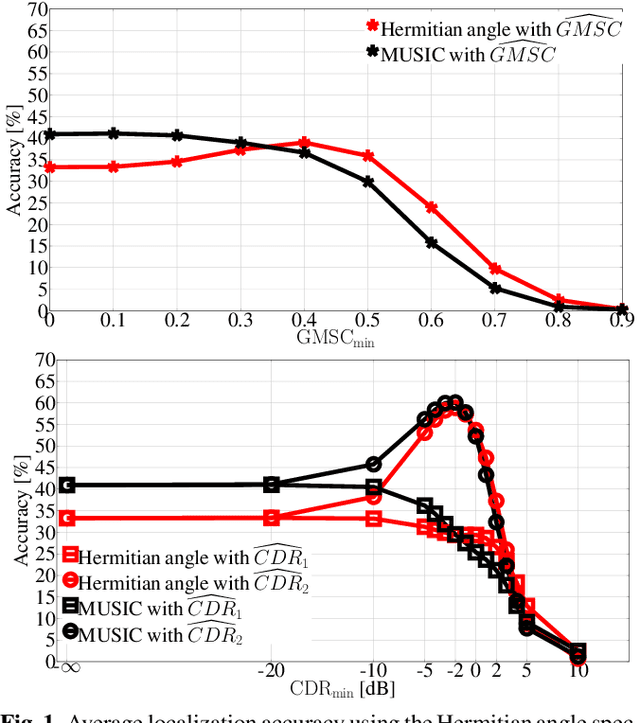Coherence-Based Frequency Subset Selection For Binaural RTF-Vector-Based Direction of Arrival Estimation for Multiple Speakers
Paper and Code
May 18, 2022
Recently, a method has been proposed to estimate the direction of arrival (DOA) of a single speaker by minimizing the frequency-averaged Hermitian angle between an estimated relative transfer function (RTF) vector and a database of prototype anechoic RTF vectors. In this paper, we extend this method to multi-speaker localization by introducing the frequency-averaged Hermitian angle spectrum and selecting peaks of this spatial spectrum. To construct the Hermitian angle spectrum, we consider only a subset of frequencies, where it is likely that one speaker is dominant. We compare the effectiveness of the generalized magnitude squared coherence and two coherent-to-diffuse ratio (CDR) estimators as frequency selection criteria. Simulation results for estimating the DOAs of two speakers in a reverberant environment with diffuse-like babble noise using binaural hearing devices show that using the binaural effective-coherence-based CDR estimate as a frequency selection criterion yields the best performance.
 Add to Chrome
Add to Chrome Add to Firefox
Add to Firefox Add to Edge
Add to Edge